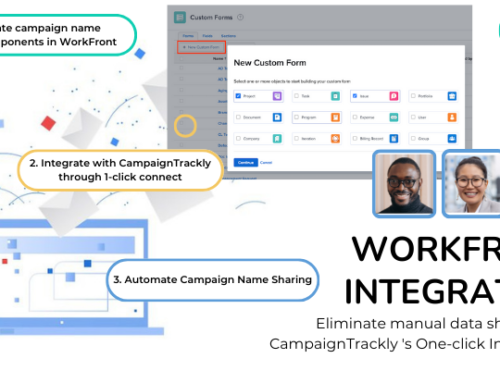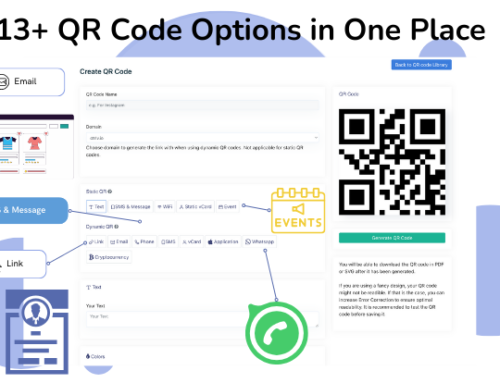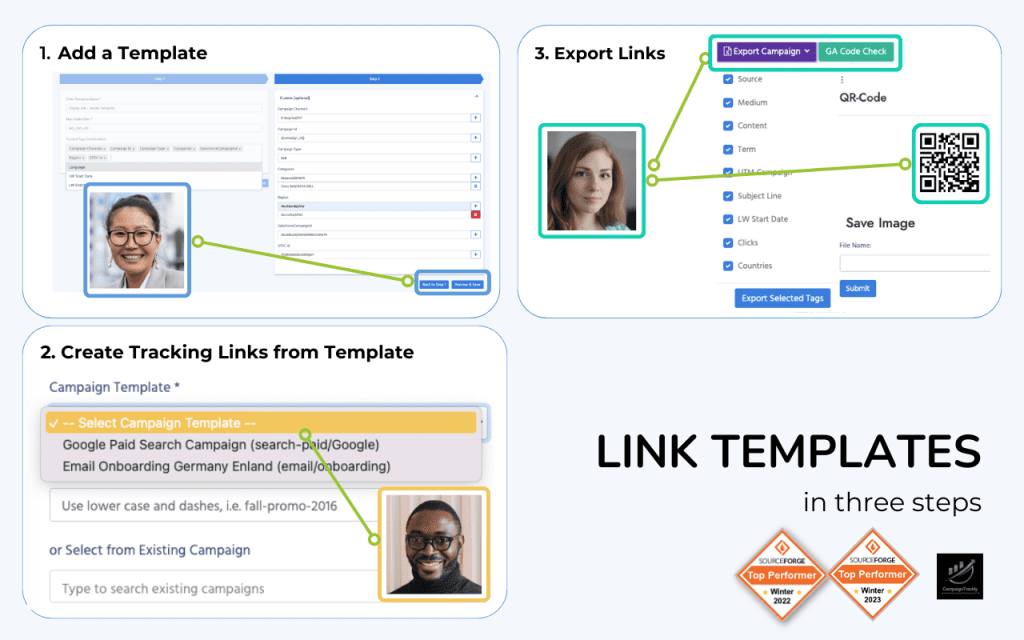Master UTM Tracking with this 18-minute Tutorial. Build a First-class Marketing Campaign Reporting Process in No Time.
Learn how to create a solid and uniform UTM tracking process that effectively measures and optimizes your marketing campaigns. Watch the recording from our Jun 30-th live streaming event to become a UTM tracking master in less than 30 minutes.
Marketing and Campaign Attribution
Marketing attribution is the process of tracking your organic search, promotions, campaigns and ads, as users interact with them. This is done in order to identify the channels and activities which contribute most effectively to generating new customers and revenue.
Google Analytics – and many other analytics tools – enable you to specifically track your marketing campaigns through the custom campaign dimension (utm_campaign), coupled with source, medium, content and a few others.
How Campaign Attribution Works
Your analytics tool plugs in your custom campaigns into the attribution model you have selected to give you great insights on the efforts and spend that generated the best value.
To make campaign attribution work, you need to have a solid UTM-based tracking process. If you are using Adobe Analytics – instead of UTMs you will likely use CID-based tracking.
Here is How to Build a Solid Tracking Process in 5 Steps:
Contents
This video covers the following concepts: UTM Builder, URL builder, UTM tracking, UTM Link, UTM parameters, Link Tracking, Google Analytics reporting, Campaign URL Reports, Custom UTM parameters, Campaign Tracking.
- 00:00 Introduction
- 00:34 Requirements
- 02:34 Create the Tracking Model
- 06:52 Defining Which Media to Track
- 08:23 Documenting Your Tags and Rules
- 10:50 Rules for the UTM_Campaign Conventions
- 13:50 Rules for the Rest of Your Tags
- 15:20 Add Your Tracking Process as a Required Step
- 15:54 Document Any Automations and Integrations Required
- 16:34 Recap and Conclusion
Transcript Summary
Welcome to our live stream. Today is June 30th, and I will be discussing how to build a uniform and solid tracking process for your marketing campaigns. This will help you effectively measure the performance of your marketing efforts and drive maximum ROI. Okay, let’s get started.
First, let’s discuss what you will need in order to set up a successful tracking process. Requirements:
- You need to have a CRM account like Salesforce, where you will record all your marketing campaigns throughout the year.
- Analytics account: You need an analytics account such as GA4 or Adobe. For this example, we will be using GA4.
- Alignment of GA4 channels: You need to ensure alignment between the GA4 channels you will be tracking and the campaign type groups in your CRM tool. This is crucial for uniform reporting and comparison.
UTM Tracking Setup and Structure
Assuming we have all the necessary setup, the next step is to create the tracking model and build your tracking setup structure. Start with the user journey and marketing funnel, which include acquisition, lead generation, conversion, and retention campaigns. Work with your analytics team to create a custom dimension for tracking these campaign categories.
Next, document your campaigns, budgeting, and decide on naming conventions for UTM campaign tags. Ensure consistency in naming conventions to facilitate your UTM tracking and reporting.
Define your marketing channels and sources (UTM mediums and UTM sources) that align with both Google Analytics and Salesforce CRM. This alignment enables accurate reporting and comparison.
Determine What You Will Measure
Determine what you will be measuring, including UTM content tags, A/B testing, and custom tags for products, brands, languages, countries, etc. More custom tags provide better tracking and data for informed decision-making.
Define the media you will track versus the ones you won’t track. Use a cheat sheet or similar document to clearly identify the tracked media (blue) and untracked media (white) for easy reference.
Document UTM Tracking Rules, Tag Groups & Conventions in a Playbook
Document all your tags, rules, and guidelines in a playbook. This serves as a reference for team members, new hires, and process improvements.
Include any required automations and integrations in your documentation. For example, if you’re using templates or integrating with Salesforce, provide clear instructions and diagrams.
Make adding tracking links a required step in your campaign production process. Ensure all stakeholders are aware and follow this step for comprehensive reporting.
Conclusion
In conclusion, following these five steps will help you build a uniform tracking process for your marketing campaigns. Remember the importance of parity, tracking architecture, playbook documentation, mandatory tracking step, and transferring rules to your tracking platform. With this process in place, you’ll soon have access to valuable and informative reports. Thank you for watching this live stream. If you have any questions, feel free to contact me. Have a wonderful day! Bye.











